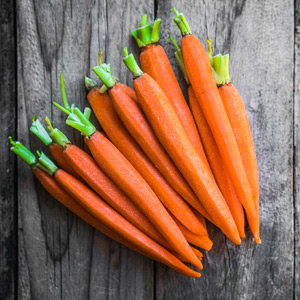Eat 5 to 9 a day for better health
“In fact, fruits and vegetables should be the foundation of a healthy diet. Most people need to double the amount of fruits and vegetables they eat every day. They are packed with essential vitamins, minerals, fiber and disease-fighting phytochemicals. Phytochemicals are usually related to color. Fruits and vegetables of different colors — green, yellow-orange, red, blue-purple, and white — contain their own combination of phytochemicals and nutrients that work together to promote good health. A variation from all color groups is recommended.
The 5 A Day for Better Health Program is a national initiative to increase consumption of fruits and vegetables by all Americans to 5 to 9 servings a day. E.g. one serving of fruits and vegetables should fit within the palm of your hand — it’s a lot smaller than most people think. The palm of your hand is an easy way to think about serving sizes and to see how doable it is to eat 5 to 9 A Day, everyday.
If you measure it out, one serving is:
A small glass of 100% fruit or vegetable juice (3/4 cup or 6 oz)
A medium-size piece of fruit (an orange, small banana, medium-size apple)
One cup of raw salad greens
1/2 cup of cooked vegetables
1/2 cup of cut-up fruit or vegetables
1/4 cup of dried fruit
1/2 cup of cooked beans or peas
Weight Management
Most fruits and vegetables are naturally low in calories and fat. And many contain lots of water and fiber to give you a feeling of fullness. Combined with an active lifestyle and low-fat diet, eating greater amounts of fruits and vegetables and fewer high-calorie foods at meals can help you control your weight.
Protective Effects of Fruits and Vegetables
(A review of 226 scientific studies establishing the role of fruits and vegetables in disease prevention can be found in the October 1996 issue of The Journal of the American Dietetic Association.)
Increasing your consumption of fruits and vegetables has a “protective effect” against cancers of the stomach, esophagus, lung, oral cavity and pharynx, endometrium, pancreas and colon; as well as cardiovascular disease, diabetes, stroke, obesity, diverticulosis and cataracts.
The Surgeon General recommends you eat at least five servings of fruits and vegetables to reduce the risk of these diseases.
Quotes from experts heard in Humanmedia’s one-hour audio program, Everyday Healing Foods (Program # EH1)
Harvard Professor Victor Guerwich, MD says, “…the effects of onions and garlic appear to be interchangeable. They do come from the same family, they belong to the same genus, allium, and the garlic is simpler, on the gas chromatograph we can see 50 different compounds in garlic, but there are about 150 in an onion. The onion is more complex, but the essential components appear to be in both.” Researcher Paul Talalay, MD of Johns Hopkins University has focused on the relationship between diet and cancer. He has studies enzymes present in all cells, that help rid the human body of noxious materials…Dr. Talalay: “We found that cruciferous vegetables such as cauliflower, Brussels sprouts, kale, cabbage, and broccoli were particularly rich in these types of activities, I mean by that the ability to raise the detoxifying enzymes in the body. This was interesting because studies on populations, epidemiological studies, had already shown that the consumption of such vegetables was associated with a lower cancer risk.”
Many other illuminating insights and facts about such things as beta-carotene, carotenoids, anti-oxidants, and ellagic acid, contained in fruits and vegetables, pepper this documentary. Also, take a walk through the herb and spice section of a supermarket with expert Mark Blumenthal, Executive Director of the American Botanical Council.
This post was takend from www.5aday.gov/what, which no longer is active. You can visit the old page on the Internet Archive here: https://web.archive.org/web/20070122152558/www.5aday.gov/what












